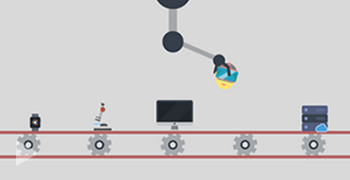Patent Procurement
The organic procurement process is where a company has a technology that they’re looking to protect and approaching us for patent protection. The first step that we would take is an IP order or a harvest process.
You’ve developed a valuable invention your company wants to patent. Now that you have a disclosure meeting scheduled, take a minute to listen to how to best prepare for it.
A patent attorney will use the disclosure information to write the specification of the application and to write the claims of the invention.
There are two things that a patent attorney typically looks for during a disclosure meeting. Check out this video to find out what they are.
The disclosure meeting is the time for the inventor(s) to tell a patent attorney everything that they know about the invention.
An inventor should come to the invention disclosure meeting prepared and be ready to tell what the invention is.
The tyipcal breakdown are two types of information that we need to gather. The first type is architectural and the second is functional.
Once we have concluded the harvest session to basically gather up all the inventive concepts that are candidates for patent protection, we then go through an evaluation and a ranking process.
One question we get from inventors very frequently is why do I need to really spill the beans and provide all this deep technical information when I’m looking for patent protection for the broader concept?
One of the consequences of having a poorly drafted patent, or a portfolio of poorly drafted patents, is you will have these assets that you’re scared to enforce.
Having a thorough patentability search and trying to get that closest piece of prior art in front of you while you’re drafting the patent application can make a difference in getting a high quality patent.
The first step of the patent examination process is filing a patent application. After you file a patent application in the patent office, then it sits in the queue at the patent office. Sometimes that can take a year to a year and a half.
The standard for getting a patent really has three different filters to it. The first is utility. The second is novelty. And the third is non obviousness. If you can meet those three requirements, then you can potentially get a patent on your device or your method.
While there isn't a requirement to actually search for the prior art, what you do find has to be disclosed to the patent office. If you don't disclose any searches to the patent office that you're aware of, it can render your patent unenforceable.
The job of a patent attorney is to craft claims that are broad enough to exclude others from practicing the invention but the claims have to be narrow enough to avoid the prior art, because if your claims are so broad as to encompass the prior art, then your patent is invalid.
An important thing to remember in terms of prior art, and how to look at patents as prior art, is that the entire patent document is prior art.
You can receive a number of different rejections during the patent examination process. The types of rejections correspond to the requirements for getting a patent - Utility, novelty, and nonobviousness.



